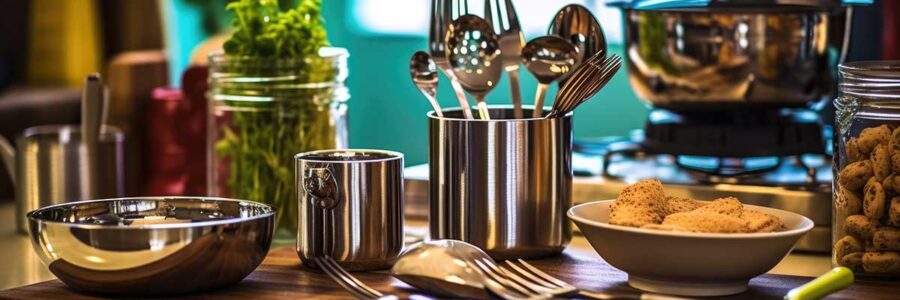As a mainstay in modern kitchens, Stainless Steel Cookware is admired for its durability and sleek look. However, chromium and nickel in stainless steel raise health concerns. This article explores these risks and suggests safer alternatives and best practices.
Stainless Steel Composition and Concerns
Stainless steel is an iron-based alloy, with its anti-rust properties deriving from chromium (10-30%) and often nickel. Chromium forms a protective chromium oxide layer, but the leaching of chromium and nickel into food during cooking, especially acidic foods, is a health concern.[1][2]
Chromium and Nickel Toxicity Risks
The leaching of these metals into food can lead to health risks. Although the body requires small amounts of chromium and nickel, excessive exposure can be harmful. The risk is heightened for sensitive individuals and with prolonged exposure. Studies show varying leaching levels influenced by cookware quality and cooking conditions.[3]
Safer Stainless Steel Alternatives
Safer options include 18/10 and 300 series stainless steel, with the latter known for higher chromium and lower nickel content. These variants offer greater stability under heat and better corrosion resistance, thus minimizing metal leaching.[4]
Best Practices with Stainless Steel
To reduce exposure to leached metals:
- Avoid cooking or storing acidic foods in stainless steel.
- Use glass containers for acidic foods, as glass is inert and doesn’t react with acids.
- Choose wooden or silicone utensils to prevent scratches on stainless steel surfaces, which can increase metal leaching.[2]
Carbon Steel: A Viable Alternative
Carbon steel, high in iron and low in carbon without chromium or nickel, is a good alternative. It offers excellent heat retention and durability but requires seasoning to maintain non-stick properties and prevent rust.
Summary
Awareness of the potential health risks of chromium and nickel leaching from Stainless Steel Cookware is vital. Choosing safer stainless steel types, using glass for acidic foods, and opting for non-metallic utensils can mitigate these risks. The aim is to balance safety, functionality, and culinary enjoyment.
References:
- Eliaz, Noam. “Corrosion of Metallic Biomaterials: A Review.” Materials (Basel, Switzerland) vol. 12,3 407. 28 Jan. 2019, doi:10.3390/ma12030407
- Ali Sultan, Saif Ali et al. “Assessing Leaching of Potentially Hazardous Elements from Cookware during Cooking: A Serious Public Health Concern.” Toxics vol. 11,7 640. 24 Jul. 2023, doi:10.3390/toxics11070640
- Kamerud, Kristin L et al. “Stainless steel leaches nickel and chromium into foods during cooking.” Journal of Agricultural and food chemistry vol. 61,39 (2013): 9495-501. doi:10.1021/jf402400v
- Guarneri, Fabrizio, et al. “Release of nickel and chromium in common foods during cooking in 18/10 (grade 316) stainless steel pots.” Contact dermatitis vol. 76,1 (2017): 40-48. doi:10.1111/cod.12692


